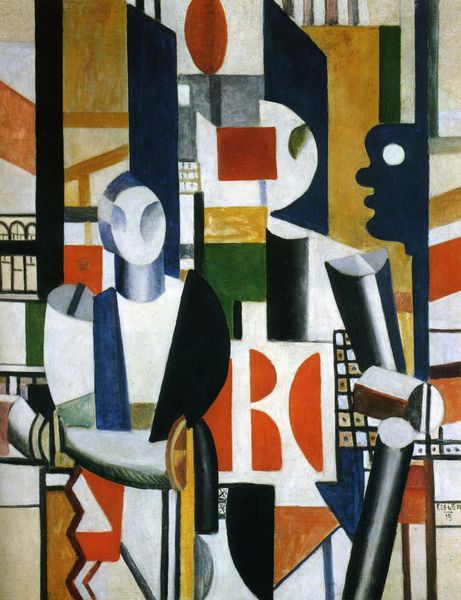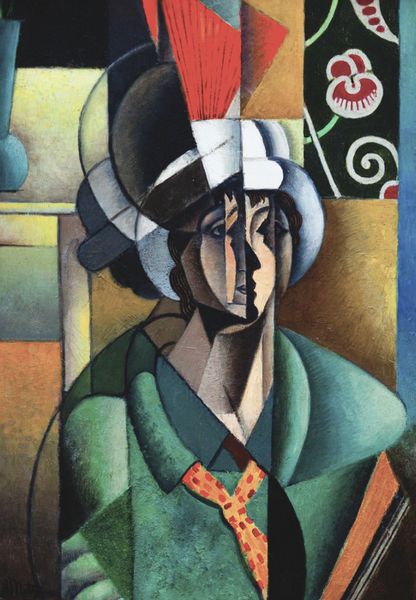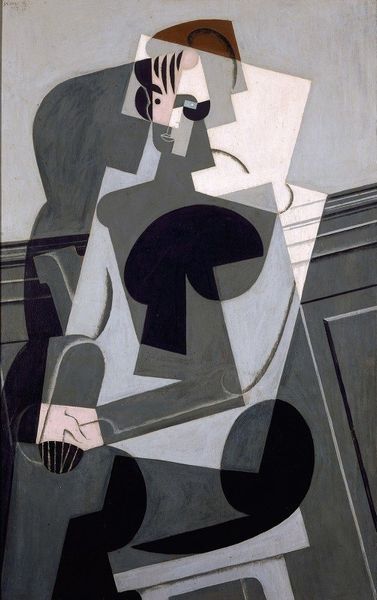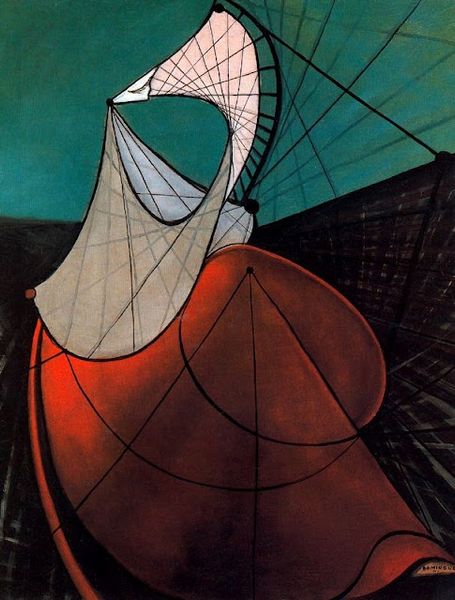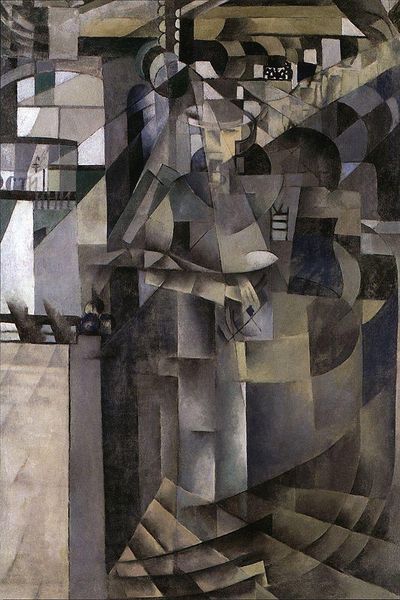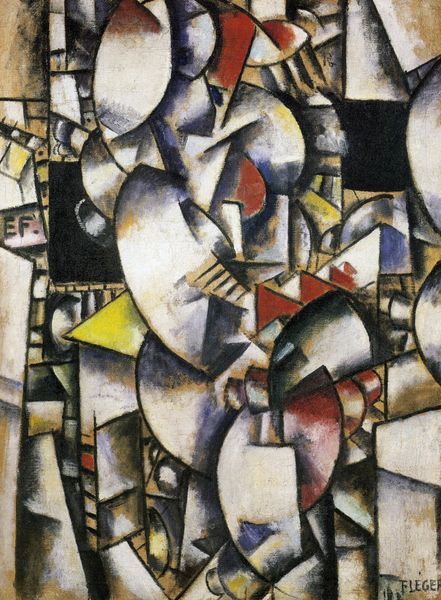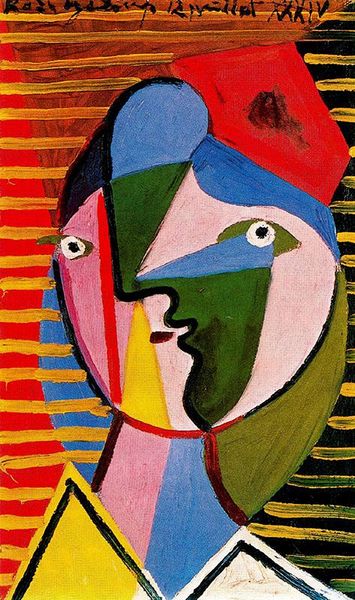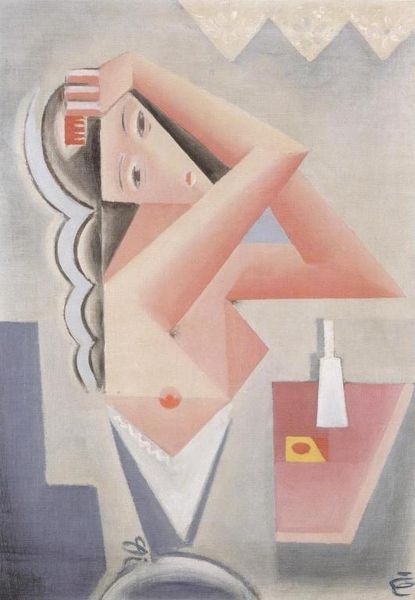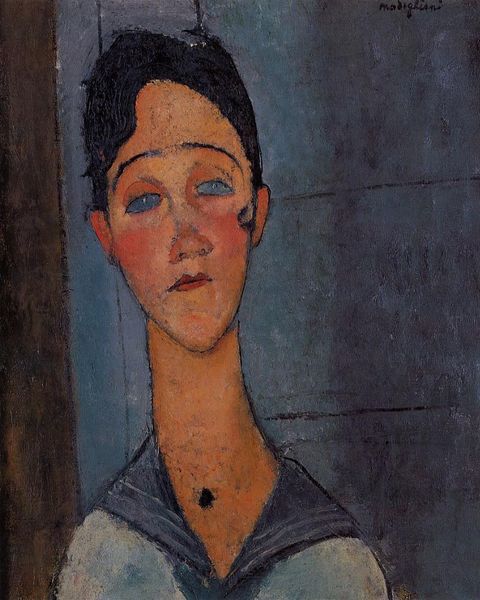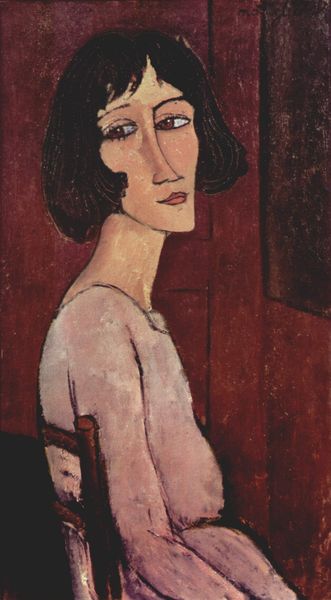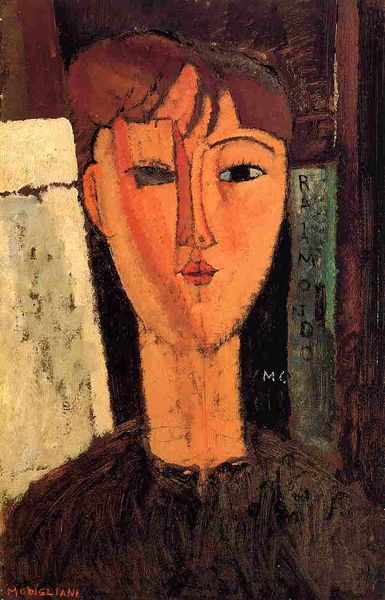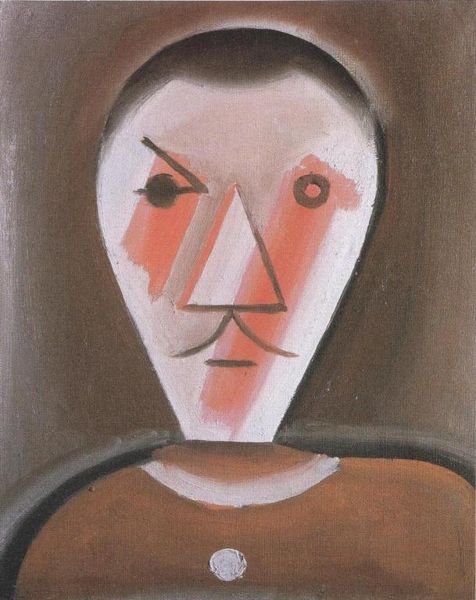
painting, oil-paint
#
portrait
#
cubism
#
character portrait
#
painting
#
oil-paint
#
figuration
#
geometric
#
portrait art
#
modernism
Dimensions: 55 x 38 cm
Copyright: Public domain
Curator: This is Juan Gris’s “Portrait of Germaine Raynal,” painted in 1912. The piece is an oil painting currently held in a private collection. Editor: Immediately, the fracturing strikes me. It's as if Gris has taken a lens to Germaine, not to capture her, but to analyze her, pulling her apart, revealing her geometry. Does this resonate with you? Curator: Absolutely! The cubist style, that deconstruction of form, is so compelling here. He’s not just presenting a likeness but investigating the essence of Germaine, of the subject. He is revealing the different perspectives and underlying structure. Editor: Yes, the different perspectives feel loaded. It challenges traditional notions of portraiture and representation. Germaine is not presented as a unified, singular entity but a composite of fractured viewpoints. Who was she? How does this treatment represent women of that time? Curator: Well, Germaine Raynal was the wife of the poet Maurice Raynal, who was a key figure in the avant-garde art scene in Paris at the time. Gris had many ties to this movement and it likely influenced him. To think of Germaine not just as a wife but an integral, even fractured part of this burgeoning time is quite exciting. Editor: Right, we're looking at not just a person, but a space and time, refracted through her presence. It reflects the intellectual and artistic ferment of the period. The fracturing suggests a breakdown of traditional hierarchies and the rise of a new subjectivity—a revolutionary moment reflected on canvas. Curator: It’s more than that even; there’s a tenderness I see in the muted palette, and almost an emotional depth. I do find myself connecting to Germaine even through all these geometric components. Does that make sense? Editor: Absolutely, despite the fragmented nature, there's an undeniable humanity present. Perhaps Gris captured something beyond surface appearances; a resilience in her fragmented self. Curator: Precisely! The choice of colors and geometric arrangement almost elevates Germaine, rendering her iconic. It’s almost a celebration of that particular fragmented moment in history! Editor: In closing, I find that “Portrait of Germaine Raynal" is a great representation of how a seemingly straightforward depiction of a person is more like a complex interrogation of identity, space, and cultural context. Curator: Agreed. And by looking at this singular person from a fragmented lens, Gris’ has, quite poignantly, composed a much larger picture.
Comments
No comments
Be the first to comment and join the conversation on the ultimate creative platform.
